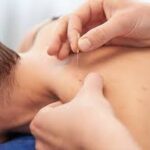The Benefits of Dry Needling
Benefits of Dry Needling
By Emelye Glennen MYOTHERAPIST
Click Here to learn more about Emelye Glennan
What is Dry Needling?
There are several types of dry needling that are used to help relieve muscular pain as well as other soft tissue techniques. It is effective in the treatment of acute issues as the body is not put through the stress of excessive pressure being put on the affected area. It has been shown to reduce pain, improve and increase the body’s range of motion, and helps speed up recovery times.
The most common type of dry needling is trigger point needling, which uses the same fine needles as acupuncturists use to help free up restrictions in the muscles caused by trigger points and relieves the pain associated with them. It can also be used to either activate or relax muscles.
Dry needling is not the same treatment as acupuncture. Acupuncturists use the different channels and meridians in the body at defined points to affect different bodily systems or Qi. Dry needling uses anatomical principles to determine where the needles are placed to help relieve pain.
What can Dry Needling treat?
Dry needling can be used to treat a wide range of issues, the most commonly treated include but are not limited to;
- Muscle pain cause by trigger points in the body
- Temporomandibular Joint Dysfunction (TMD)
- Headaches and Migraines
- Sciatic Pain
- Postural Pain
What to expect during treatment?
There are many different things that you may experience when having dry needling depending on the type of needling you are having, what muscles are being needled, and how active the trigger points may be. You may experience;
- Twitch Response – A twitch response is exactly what it sounds like. The muscle will twitch when it hits the right spot. It may be small or quite a large twitch. It is most common in larger muscles and may be a bit strange the first time it happens. This can also happen during manual trigger point therapy in which the therapist uses their hands instead of needles.
- Dull Ache – This is associated with the needle being placed in the trigger point and then producing a dull ache in the muscle or along the referral pattern that the trigger point may have.
- Nothing – You may feel nothing at all! Not all dry needling produces a pain or twitch reaction.
When dry needling is used correctly, it can be a very effective tool in relieving pain in the body along with a range of other soft tissue techniques. If you feel you would benefit from this or have any questions, feel free to discuss it with your practitioner.
Book a massage or Myotherapy Treatment
Article by Emelye Glennen – Myotherapist
Check out some of our informative posts on facebook!


